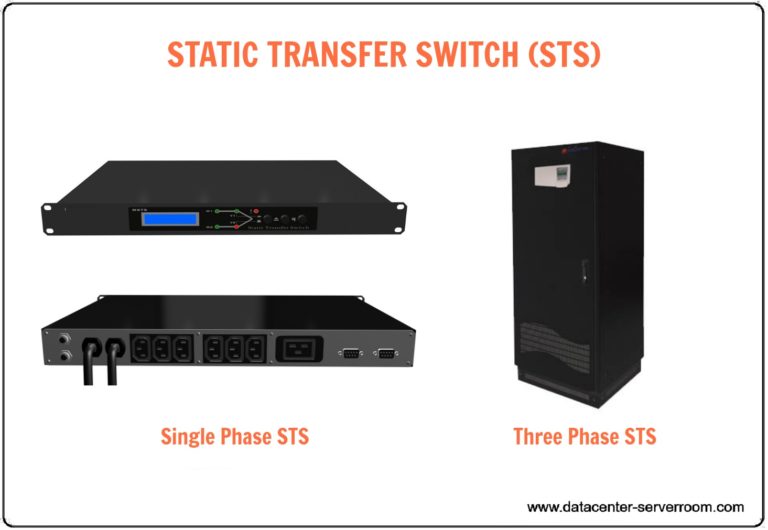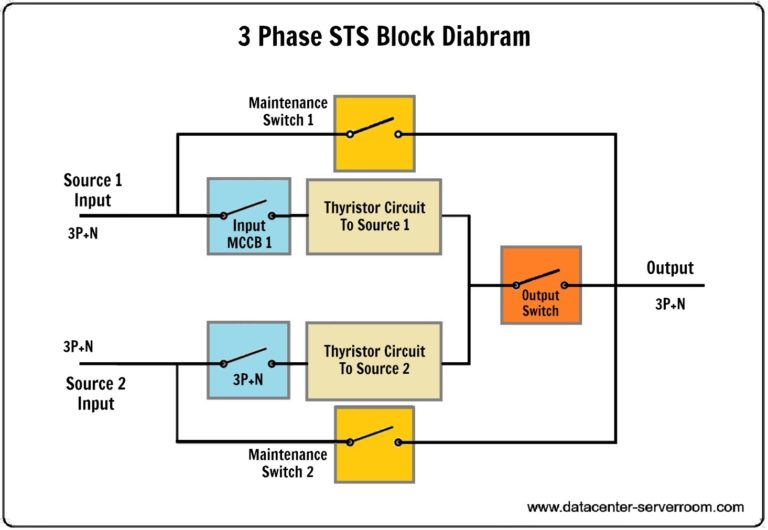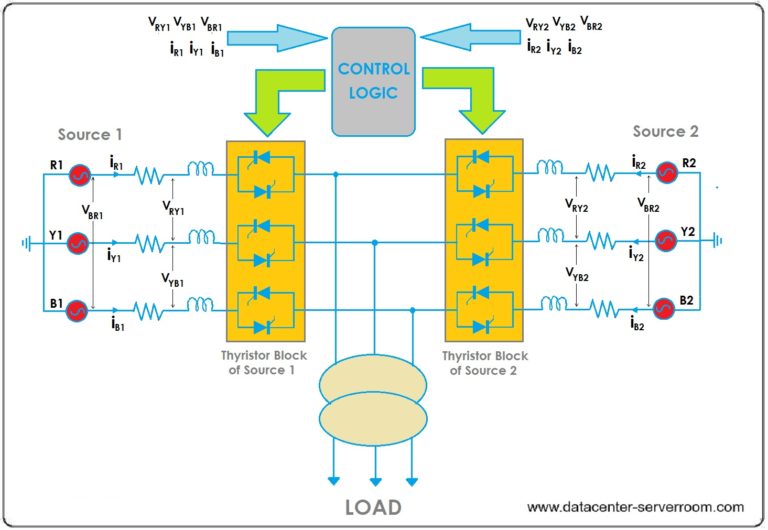Static Transfer Switch
What is Static Transfer Switch (STS)?
Static Transfer Switch (STS) is Static Electric device which designed to automatically transfer load for preferred power source to standby power source connected to its input in case of disruption in former and visa versa without any interruption of server room load. As name suggest it is fully static device without any electromechanically parts. Static Switch can transfer load within 1/4th of cycle time hence it ensures uninterrupted power to Datacenter load. Static Transfer Switch consists of antiparallel connected thyristor connected in each phase. These thyristor are Gate turn-off Thyristor (GTO) which can turn on by Gate Signal and Turn off by Gate Signal of Negative polarity. By controlling switching on and off of these SCR, faster load transfer achieved. Total transfer time sum of time taken to detected disturbance in source and time taken to transfer load ion on other source. Static Transfer


Switch schematic is shown above. Both source has thyristor circuit with its own input MCCB and Maintenance bypass switch.
Difference
How STS Works?
Static Transfer Switch consists of Control logic, metering circuit, Thyristor circuit, breaker and Bus assembly. Function of control logic to continuously check current and voltage of both source and give gate single to rectifiers. Control logic continuously checks voltage and current of prepared source and alternate source. In case of failure of preferred source or disturbances likes over/under voltage and current in preferred source, then control logic checks status of alternate source and transfer load to source whichever can provide power within selectable limit. If both source are synchronized with phase error within limit then automatic transfer can happen within 6 millisecond.

Types of Static Transfer Switches
Static Transfer Switch are basically of two types. Single phase STS and Three phase STS. This are generally rack mount type available unit available from rating of 16A to 160A. Three phase static switches can be 3 pole type or four pole type static switch. In 3 pole S T S, neutral is continuous through out entire system. In other word neutral in common for both input sources & input neutral directly connected to output neutral. While in four pole system each source have its own neutral. Neutral is separately derived and output neutral connected to neutral of current source. If Data center facility has two sources with separate neutral grounding then to avoid use of downstream transformer, 4 pole static transfer switch can be use. 3 phase static switch are available from rating of 50A to 1600A.

Advantages of Static Switch.
Some of the advantages of Static transfer switches are as follow:
- It offers more quality and hence reliability.
- It offer fast transfer of load. Load transfer time is around 4 to 6 milliseconds only.
- Built in Transient Voltage Surge Suppressor for additional protection.
- Voltage limit is selectable as per requirement to protect load from sag, swell and interruptions.
- Dry contact provided for monitoring of static transfer switch.
Control Technologies FZE
PO Box 122271, SAIF Zone,
Sharjah, United Arab Emirates.
T: +971 6 5489626
F: +971 6 5489626
E: sales@ctrltechnologies.com
W: www.ctrltechnologies.com
Working Hours:
Sunday to Thursday
08:30 AM to 06:00 PM
